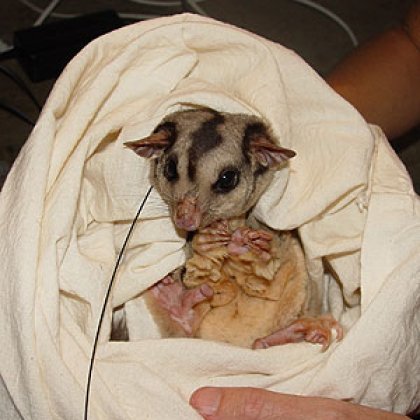
University of Queensland researchers are measuring the effectiveness of new crossing poles installed for the endangered Mahogany Gliders in Far North Queensland.
Powerlink Queensland installed the glider poles as an opportunity to increase forest connectivity for the gliders living in the area of a transmission line replacement project, which is taking place between Ingham and Tully.
UQ’s Dr Greg Baxter and Dr Megan Brady have been using infrared cameras and tracking devices to find out how the Mahogany Gliders are using the poles in their environment.
Dr Baxter said Mahogany Gliders had very specific habitat requirements, which was why researching the effectiveness of the new poles was so important.
“Our research is helping us identify what makes a good quality habitat for the Mahogany Gliders. This information will enable us to find ways to protect aspects of the gliders’ habitat that are vital to their’ survival, such as the native vegetation surrounding the new power lines,” Dr Baxter said.
“The crossing poles should help the gliders move around easily within their habitat – allowing them to continue finding food and mating partners, and disperse across the area,” he said.
Over the next year, Dr Baxter and Dr Brady will continue consulting with Powerlink and the Queensland Parks and Wildlife Service to extend the crossing poles to other locations and also investigate whether the genetics of the Mahogany Gliders change over time.
“Eventually, we will have installed a complete set of poles, so the gliders can make choices on where they glide to,” Dr Baxter said.
“This is particularly important for their survival, as it increases options for an escape route if they are being chased by predators,” he said.
For more information about the Mahogany Gliders’ crossing poles project please contact Megan Brady on m.brady@uq.edu.au
Media: Caroline Bird, UQ Communications, 3365 1931 or c.bird1@uq.edu.au




